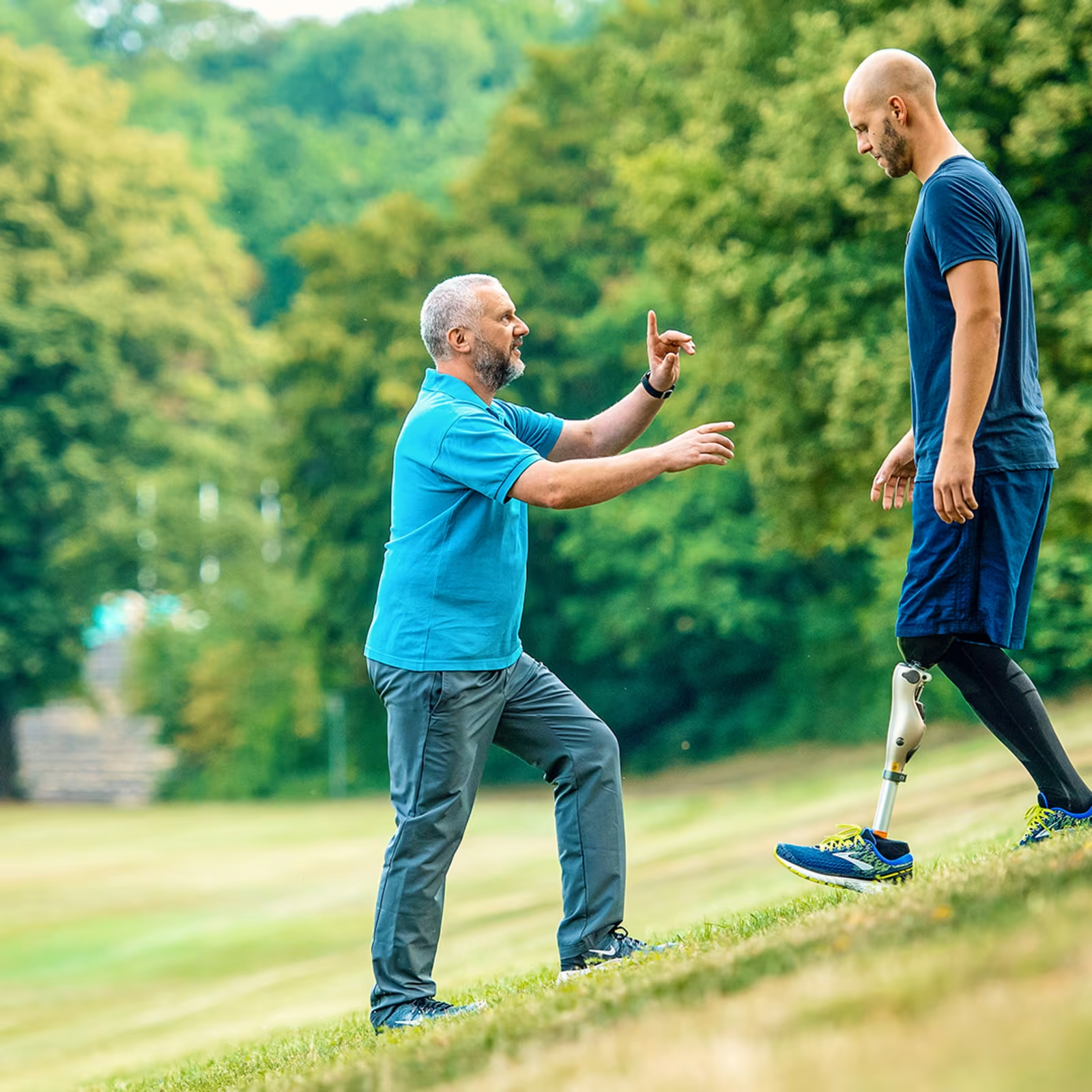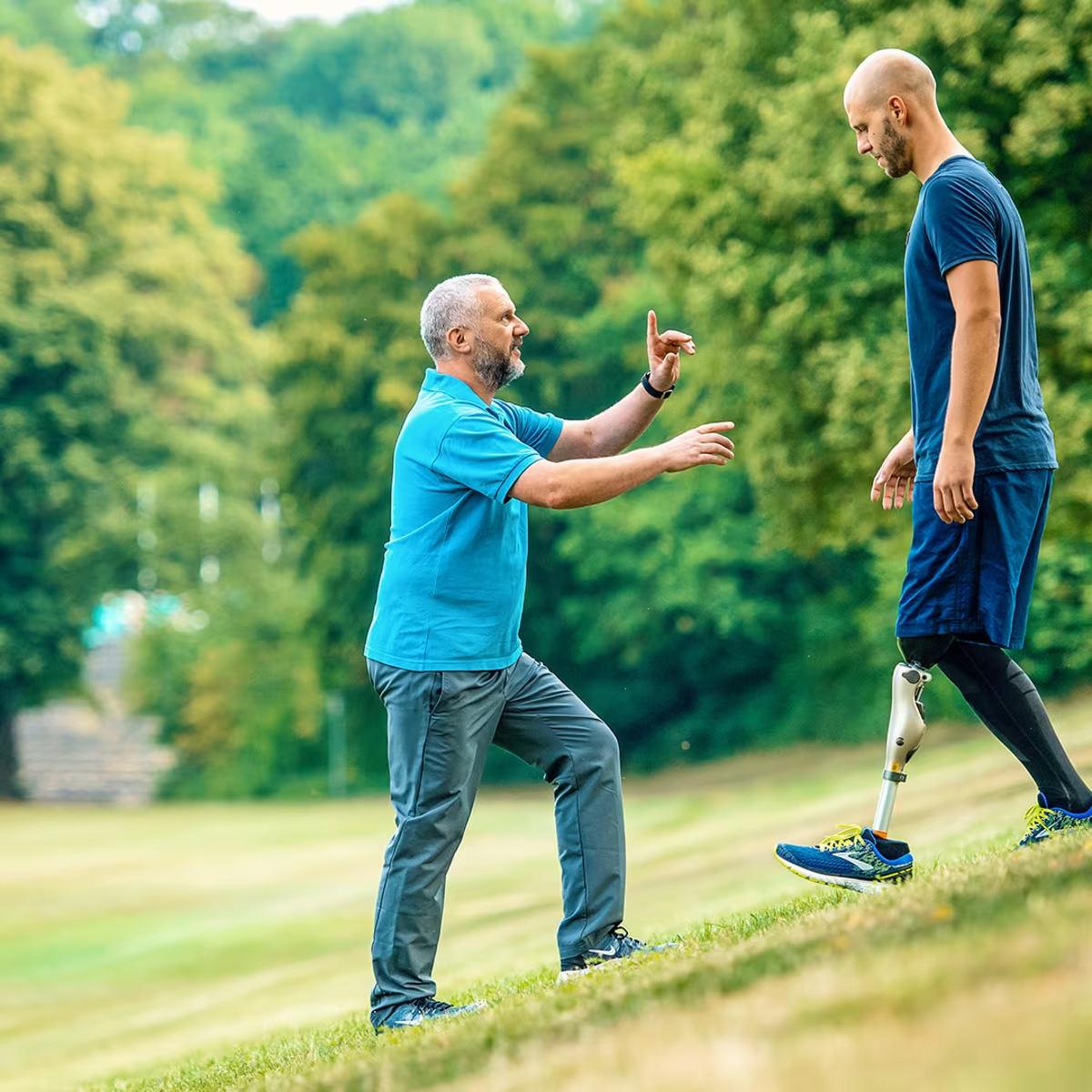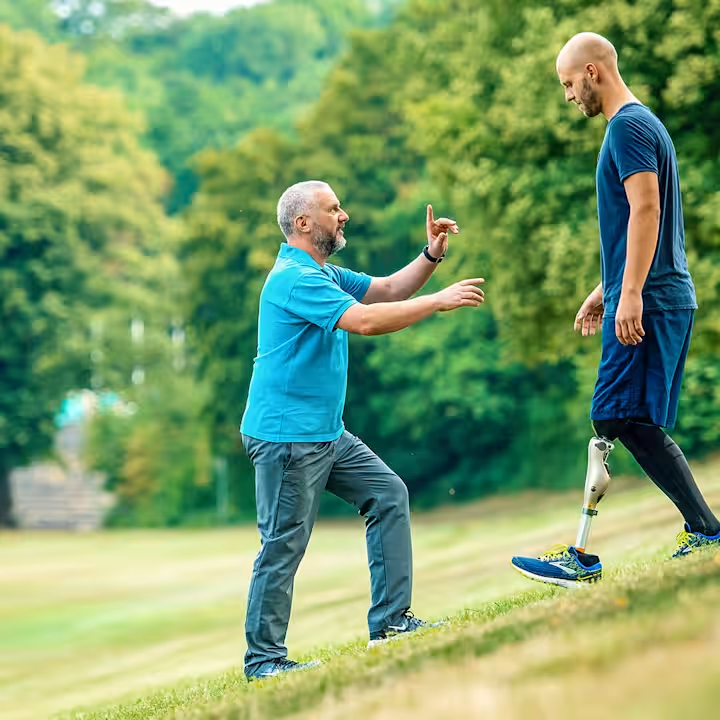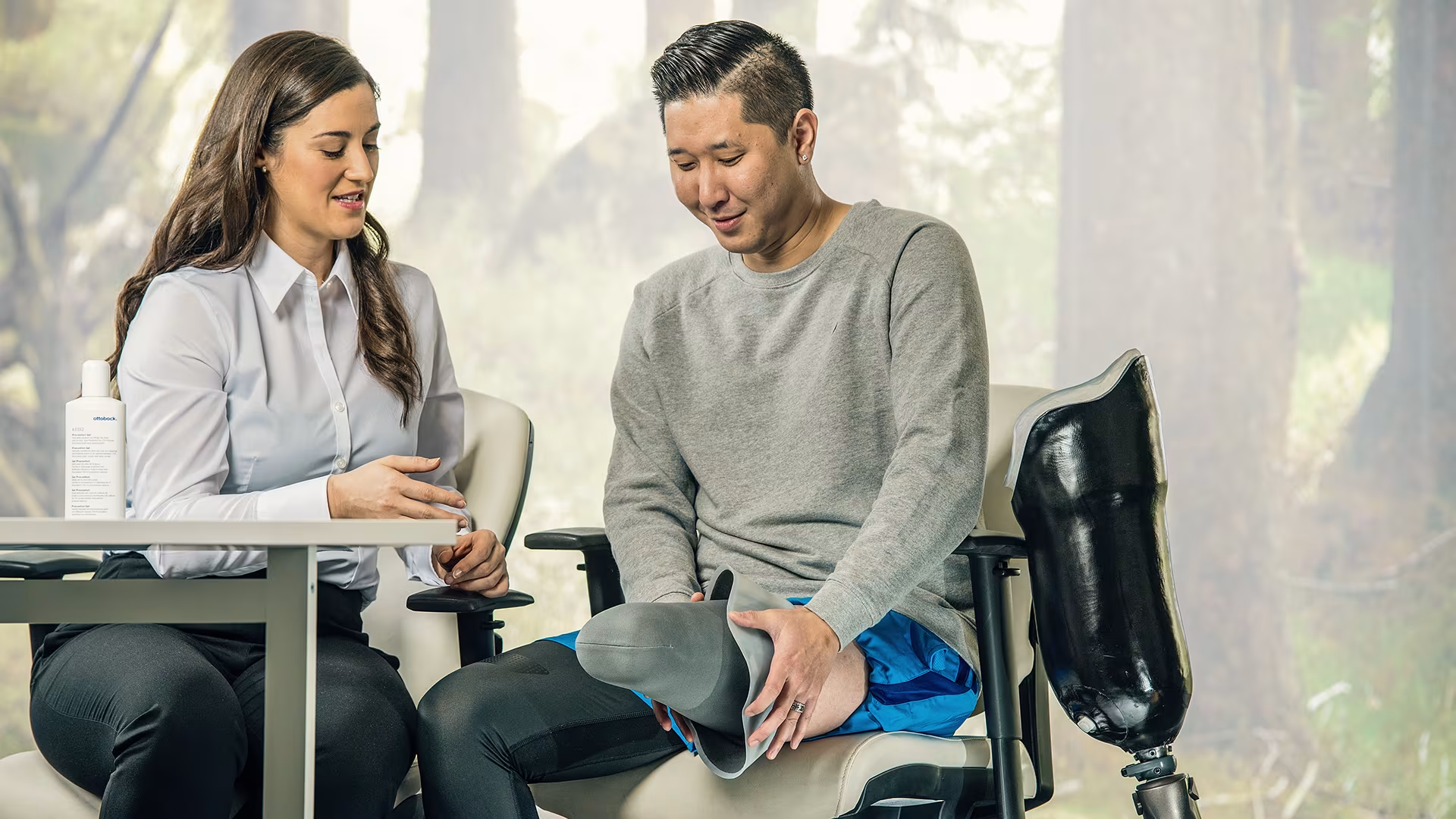


Prepare patients for daily life
Supporting your patients to reintegrate back into daily life with their prosthesis.
Supporting your patients to reintegrate back into daily life with their prosthesis.
Getting your patient back to daily life
Returning to work, enjoying their social life, and getting back to favorite activities - for most lower-limb amputees, these are among the most important goals of rehabilitation. Once your patients have physically stabilised after surgery, and you’ve fit them with a long-term prosthesis, the focus shifts to one of the last steps of rehabilitation: helping your patients rejoin their everyday life.
In this phase, a key priority is helping patients navigate home and working environments that may feel very different with a lower-limb prosthesis. Everyday activities and professional tasks will vary significantly from patient to patient, so it’s important for physiotherapists and prosthetists to have a clear and detailed understanding of the daily life of each patient.
Here are a few examples of how different everyday activities can look for each individual patient:
Factory worker: He spends most of his 8-hour shift on his feet and also has to lift heavy objects over his head several times every hour. He also loves to ride his bike to work.
Mother of two small kids: She spends much of her day playing with her children, carrying them, or pushing them in a pushchair. Her family also has a large garden with several flowerbeds that she loves to tend.
Office worker: She commutes to her company’s office building via public transport, which takes up to 45 minutes and requires two changes. During rush hour, she’s constantly at risk of someone bumping into her and throwing her off balance.
For users like these and many others, adjusting to life after amputation can sometimes be a difficult process. But it can be particularly difficult for individuals who’ve experienced a traumatic limb loss.
These users often face both physical and psychological challenges during their rehabilitation and return to daily life. They may find themselves asking many difficult questions about their future: Will I still have the confidence to go to work and get around my home? Will I be a burden to my family? Should I be afraid to try my daily activities again?
For these patients, it can be helpful to expand their care team to include a therapist, a support group, or another venue where they talk about their experiences with other amputees. Resources like these can be especially helpful during the critical transition from rehabilitation to home.
That process can be challenging, especially for those who’ve been through a traumatic event. But with the right help and your clinical expertise, most patients will successfully navigate their recovery and get back to a fulfilling everyday life.

Ongoing care and support for your patient
Losing a lower limb is always a life-changing event. For many patients, learning to be an amputee is a lifelong process – one that often requires long-term mental, emotional, and physical support. For prosthetic teams, that support is typically focused on maintaining the integrity and functionality of the user’s prosthesis.
Users’ bodies can change over time (especially their residual limb), their everyday needs evolve, and their prosthesis will experience daily wear and tear. Over time, it may be necessary to adjust the socket fit, re-align components, or deliver some tailored training to help your patient adapt to a change in their physical condition. If a patient’s mobility level changes, it may also require a new assessment tool.
Each touchpoint with your patient is an opportunity to evaluate their progress and help them get the most from their prosthesis, as well as their life as an amputee. Together, as part of their multidisciplinary care team, you can help them maintain their mobility, support their physical and mental health, and ultimately, live the fullest life they want to achieve.
Movao community for users
Movao is a community where prosthetic users come together, sharing experiences and supporting each other.
The platform offers informative content and personal stories around the topic of amputation, online and offline events, a sport group and much more.
We invite all people with limb loss and their loved ones to become part of Movao.

Advance your skills with Ottobock
Are you looking to maximise the outcomes you can achieve with Ottobock products? Complete the form below to connect and schedule a training session with our Prosthetic Academy Clinicians.
Your benefits:
Connect with a global expert community
On and offline trainings and certifications
Content designed for physiotherapists
More back to mobility topics

Pre-amputation preparation
A step-by-step guide on what to consider and how to prepare your patients and their relatives for a planned amputation.
A step-by-step guide on what to consider and how to prepare your patients and their relatives for a planned amputation.

Post-amputation recovery
Take the right steps to set your patients up for successful rehabilitation back to mobility.
Take the right steps to set your patients up for successful rehabilitation back to mobility.

Prosthetic fitting
Prepare your patients for their first prosthetic fitting and restoring their mobility. Plus learn more about the components of a prosthetic leg.
Prepare your patients for their first prosthetic fitting and restoring their mobility. Plus learn more about the components of a prosthetic leg.

Prosthesis and gait training
Educate your patients on getting familiar with their prosthesis and guiding them through learning to walk.
Educate your patients on getting familiar with their prosthesis and guiding them through learning to walk.